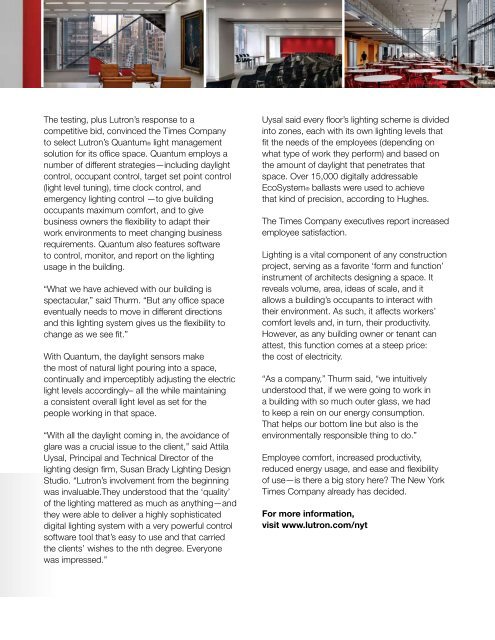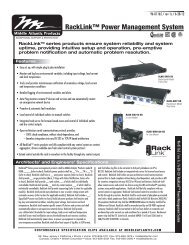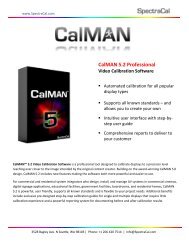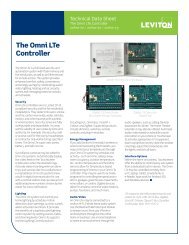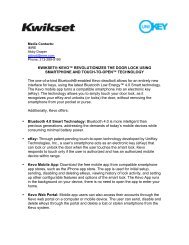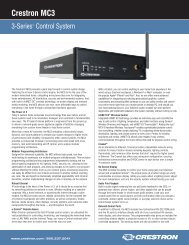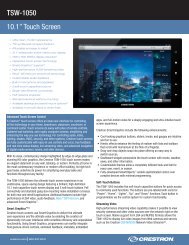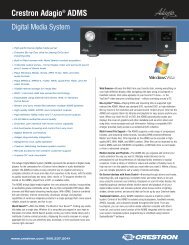case study | The New York Times Building, New ... - TechDecisions
case study | The New York Times Building, New ... - TechDecisions
case study | The New York Times Building, New ... - TechDecisions
- No tags were found...
Create successful ePaper yourself
Turn your PDF publications into a flip-book with our unique Google optimized e-Paper software.
<strong>The</strong> testing, plus Lutron’s response to acompetitive bid, convinced the <strong>Times</strong> Companyto select Lutron’s Quantum® light managementsolution for its office space. Quantum employs anumber of different strategies—including daylightcontrol, occupant control, target set point control(light level tuning), time clock control, andemergency lighting control —to give buildingoccupants maximum comfort, and to givebusiness owners the flexibility to adapt theirwork environments to meet changing businessrequirements. Quantum also features softwareto control, monitor, and report on the lightingusage in the building.“What we have achieved with our building isspectacular,” said Thurm. “But any office spaceeventually needs to move in different directionsand this lighting system gives us the flexibility tochange as we see fit.”With Quantum, the daylight sensors makethe most of natural light pouring into a space,continually and imperceptibly adjusting the electriclight levels accordingly– all the while maintaininga consistent overall light level as set for thepeople working in that space.“With all the daylight coming in, the avoidance ofglare was a crucial issue to the client,” said AttilaUysal, Principal and Technical Director of thelighting design firm, Susan Brady Lighting DesignStudio. “Lutron’s involvement from the beginningwas invaluable.<strong>The</strong>y understood that the ‘quality’of the lighting mattered as much as anything—andthey were able to deliver a highly sophisticateddigital lighting system with a very powerful controlsoftware tool that’s easy to use and that carriedthe clients’ wishes to the nth degree. Everyonewas impressed.”Uysal said every floor’s lighting scheme is dividedinto zones, each with its own lighting levels thatfit the needs of the employees (depending onwhat type of work they perform) and based onthe amount of daylight that penetrates thatspace. Over 15,000 digitally addressableEcoSystem® ballasts were used to achievethat kind of precision, according to Hughes.<strong>The</strong> <strong>Times</strong> Company executives report increasedemployee satisfaction.Lighting is a vital component of any constructionproject, serving as a favorite ‘form and function’instrument of architects designing a space. Itreveals volume, area, ideas of scale, and itallows a building’s occupants to interact withtheir environment. As such, it affects workers’comfort levels and, in turn, their productivity.However, as any building owner or tenant canattest, this function comes at a steep price:the cost of electricity.“As a company,” Thurm said, “we intuitivelyunderstood that, if we were going to work ina building with so much outer glass, we hadto keep a rein on our energy consumption.That helps our bottom line but also is theenvironmentally responsible thing to do.”Employee comfort, increased productivity,reduced energy usage, and ease and flexibilityof use—is there a big story here? <strong>The</strong> <strong>New</strong> <strong>York</strong><strong>Times</strong> Company already has decided.For more information,visit www.lutron.com/nyt


